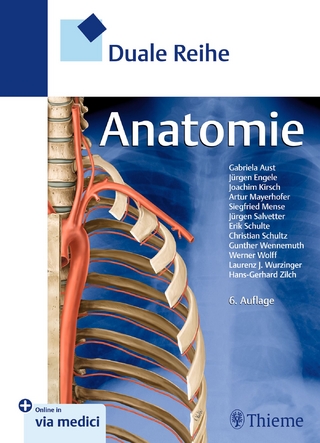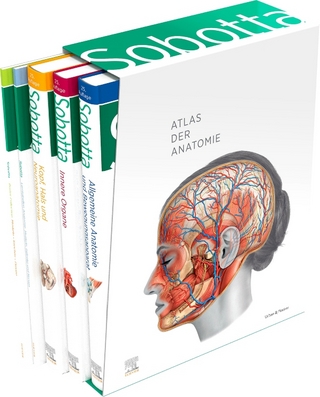
Nutrition and Skeletal Muscle
Academic Press Inc (Verlag)
978-0-12-810422-4 (ISBN)
Stéphane Walrand, MSc, PhD is research director at the French National Institute for Agricultural Research (INRA), in the Human Nutrition Department. Professor Walrand graduated in 1990 with an Honours Degree in Biological Sciences. He received his Master's degree in 1996 and he gained his PhD in 2000 in the specialty "Clinical Research, Technological Innovation and Public Health". In 2002, Professor Walrand joined the Laboratory of Molecular Endocrinology in Bratislava (Slovak Republic) as a post-doctoral fellowship under the direction of Professor Julius Brtko. He then joined INRA in 2002 as a research fellow. In 2004-2005, Professor Walrand joined the Endocrine Research Unit (Prof. KS Nair), Mayo Clinic and Foundation in Rochester, Minnesota. He was appointed as Director of Research at INRA in 2010 and since then performs the function of Deputy Director of the Human Nutrition Unit (Clermont-Ferrand, France) and co-leader of the Nutrition, Metabolism and Muscle Mass team (NuTrim). Professor Walrand has collaborations with research groups in Australia, the US, Belgium, Switzerland and the Netherlands. It has a lot of expertise on muscle metabolism in various pathophysiological conditions and under different dietary constraints. Professor Walrand is a member of the Scientific Board of the French Society of Clinical Nutrition and Metabolism. He is also one of the experts on the board of experts of French Agency for Food, Environmental and Occupational Health & Safety. He has lectured nationally and internationally. To his credit, Professor Walrand has published over 150 articles, which includes peer-reviewed manuscripts based on original research, abstracts and symposium presentations, reviews and numerous books and volumes.
Part 1. General Aspects
1. Physiological regulation of muscle mass
2. Skeletal muscle mass indices in healthy adults
3. Myofibrillar proteins
4. Reduced skeletal muscle mass and lifestyle
5. Postprandial effects on skeletal muscle
6. Molecular mechanism of post-meal regulation of muscle anabolism
7. Age-related changes in skeletal muscle
Part 2. High fat and overfeeding
8. Skeletal muscle mitochondrial and high fat feeding
9. Muscle macrophages and high fat feeding
10. Muscle insulin action and high fat feeding
11. Oxidative stress in skeletal muscle and high fat feeding
12. Maternal overnutrition and skeletal muscle in offspring
Part 3 Obesity
13. Sarcopenic obesity
14. Skeletal muscle and chronic overfeeding
15. Lipolysis in skeletal muscle of obesity
16. Obesity and respiratory skeletal muscles
Part 4. Diabetes, insulin and glucose control
17. Correlates of skeletal muscle strength in diabetes
18. Lipids in skeletal muscle and insulin sensitivity
19. Glucose, skeletal muscle and obesity
Part 5 Vitamins
20. Vitamin D signaling and skeletal muscle cells
21. Vitamin D deficiency and myopathy
22. Vitamin D and age-related loss of muscle mass and function
23. Vitamin D and exercise in humans
24. Vitamin D and skeletal muscle of amyotrophic lateral sclerosis
25. Vitamin E and skeletal muscle
26. Folate and skeletal muscle
27. Thiamine and skeletal muscle
Part 6 Minerals
28. Copper and skeletal muscle
29. Iron and skeletal muscle
30. Selenium and skeletal muscle
31. Zinc and skeletal muscle
32. Calcium and skeletal muscle
Part 7 Nutraceuticals and supplements
33. Coffee, Caffeine and skeletal muscle
34. Daidzein and skeletal muscle protection
35. Epigallocatechin-3-gallate and skeletal muscle recovery
36. Genistein and skeletal muscle
37. Grape seed proanthocyanidin and skeletal muscle protection
38. Soy beta-conglycinin and skeletal muscle
39. Quercetin and skeletal muscle fat
40. Resveratrol and skeletal muscle protection
41. Pre- and probiotics, microbiota and skeletal muscle
Part 8 Amino acid supplements
42. Arginine and skeletal muscle
43. Citrulline and skeletal muscle
44. Sulfur amino acids and skeletal muscle
45. Branched-chain amino acids (leucine, isoleucine, and valine) and skeletal muscle
46. Glutamine and skeletal muscle
47. Tryptophan and skeletal muscle
Part 9 Protein supplements
48. Mixture of whey protein and casein on skeletal muscle
49. Whey protein and muscle protection
50. Casein-enriched diets and muscle
51. Dietary protein and skeletal muscle in elderly
52. Mechanisms of muscle anabolic resistance
53. Dietary amino acids and protein hydrolysates compared with intact proteins and skeletal muscle
54. Dietary plant proteins and skeletal muscle
55. Protein supplement, exercise and skeletal muscle
Part 10 Lipid supplements
56. Dietary fat and skeletal muscle: molecular apects
57. Polyunsaturated omega-3 fatty acids and skeletal muscle
58. Fatty acids and skeletal muscle PPAR
59. Saturated and monounsaturated fatty acids and skeletal muscle
Part 11 Adverse effects due to dietary components, deficiencies, modulants or extracts
60. Statins and muscle damage
61. Protein restriction and impact on skeletal muscle
62. Nutritionnelles
63. Caloric restriction and impact on skeletal muscle
64. Seafood contaminants (palytoxins) on skeletal muscle
65. Alcoholic myopathy
| Erscheinungsdatum | 02.11.2018 |
|---|---|
| Verlagsort | San Diego |
| Sprache | englisch |
| Maße | 191 x 235 mm |
| Gewicht | 1310 g |
| Themenwelt | Medizin / Pharmazie ► Gesundheitsfachberufe ► Diätassistenz / Ernährungsberatung |
| Studium ► 1. Studienabschnitt (Vorklinik) ► Anatomie / Neuroanatomie | |
| Studium ► 1. Studienabschnitt (Vorklinik) ► Physiologie | |
| ISBN-10 | 0-12-810422-8 / 0128104228 |
| ISBN-13 | 978-0-12-810422-4 / 9780128104224 |
| Zustand | Neuware |
| Informationen gemäß Produktsicherheitsverordnung (GPSR) | |
| Haben Sie eine Frage zum Produkt? |
aus dem Bereich


